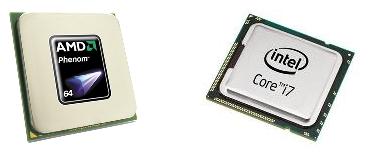Introduction
AMD has had mastery of the budget end of the processor market for some time now for reasons including price/performance, low motherboard prices and platform longevity (they don’t change sockets at the drop of a hat). The only downside has been the sacrificing of the high performance market to Intel (albeit at a much higher price). Recently Intel launched its 6-core processor the i7-980X at the usual "Extreme Edition" price of around a $1000 (or a £1000 if you happen to live in the UK due to sales tax and other historical factors) putting it out of reach of all but a few enthusiasts and professionals in specialized fields such as video editing.
Today AMD is launching its own 6-core processor code named Thuban. Two models are launched today, the Phenom II X6 1090T (3.2GHz stock and up to 3.6GHz with Turbo Core) and the Phenom II X6 1055T (2.8GHz stock and up to 3.3GHz with Turbo Core). Not only are these launching at an aggressive clock speed and with a boosting technology to rival Intel's Turbo Mode, the estimated street price for the flagship model is under the $300 dollar mark. We have tested the 1090T and it promises to really shake up the current status quo with performance that in some cases beats the best Intel CPUs available.
By spending a long time duplicating our tests six times we are able to see how various applications perform with differing numbers of cores allowing us to establish the multi-core efficiency of games such as Far Cry 2 and benchmarking tools like 3D Mark Vantage. The testing is by no means comprehensive and if we had 2-3 weeks to spare we could have tested every recent game and application for completeness so our apologies in advance if your favourite application is not included in our representative sampling.
Of more universal interest is comparing the efficiencies of the latest Intel and AMD architecture to compare current and future efficiencies and predict how future trends and architectures will affect performance.


